As it is right now, I have nine professional books in my to-be-read pile. I want to have them all finished now, but I know that isn’t realistic. Even a month from now is probably not a probable goal to set and achieve. It’s so challenging picking what to read next, making the time, and then implementing my new learning!
I won’t finish all these books in the time period I want to, but I will finish them. I need a systematic approach and a plan. When I begin tackling a book or a stack of books I have two modes of reading. Fast and slow. You may think, what’s that even mean?
Simply put, some texts are easier to read than others. A professional book with more new to me information is one I know I’m going to read slower. A book that is centered right within my wheelhouse as a teacher of writers potentially could be a fast read. Living within this thought also lies the realization that books speaking directly to what I believe in as a teacher of writers will likely be read fast as opposed to a book challenging my beliefs. Having an awareness of my own “confirmation bias” is important if I am going to grow myself from my professional reading. It’s important to me that I take a moment, now and then, to check myself and what I’m reading. Is it only serving my beliefs or am I opening myself up to evaluate, understand, and make space for those sharing differing opinions in the world of writing instruction?
Therefore, the first thing to do is decide what books are going to be fast and what will be slow. Then, of course, what is most pressing right now in terms of what I need to know and what I want to know.
Once I’ve decided what to tackle, I have multiple ways of organizing and channeling my thinking when I determine a plan of action. If you are someone who feels like there is just never enough time to read a professional book, saddle up next to me while I walk you through some strategies I use to make it enjoyable and worthwhile.
Making Time
Making time for anything is always about decisions. Nothing really goes away, but most of the time, as adults, we get to decide what we move around. Here are some tips on making time to read.
Non-Negotiable Time of Day
I tend to read blogs and articles in the morning before work and leave my professional book reading for before bed. If there is a time of your day that is less interrupted, take those ten, fifteen, or twenty minutes and make the time to read your professional text.
Set a Timer
Days are packed with work, students, families, and responsibilities. If you only think you can spare ten minutes a day, set a timer, read and then stop. Each day you do, you will move closer to completing the book and filling your knowledge base.
Segment the Text
Sometimes I put sticky notes through a book to section it out. If I notice the book is lumped into chapters that go together, I might read those that most benefit me in the short term, and set it aside to read the other parts another time.
Take Notes
Making your learning stick has been researched extensively. Overwhelmingly researchers have said that summarizing, paraphrasing, or jotting notes through the physical act of writing them down, makes learning last longer. When I take notes, I have a few different methods that work for me, and sometimes I choose a method based on the type of book I’m reading. Taking notes, or jotting bits of information, as well as summarizing sections can both be helpful strategies because each requires you, the reader, to begin synthesizing the information into a more digestible form (Beesley and Apthorp, 2010).
Sketchnoting
When I read a book a few months ago about writing assessment, I was pushed into uncomfortable places, and the book made me think long and hard about some of my beliefs. I found keeping a page for sketchnoting helped me track my thoughts through the text. The ideas were difficult for me to process and there was extensive research to work through. Being able to look back at my notes helped me to re-examine and then reread with more clarity.
Sketchnoting is something that can have varying levels of aesthetic qualities. I would say my sketchnotes are simplistic and for me that’s okay. There are also sketchnotes that span toward artistic and the level of processing that can accompany this representation of ideas is something I hope to explore with more depth. Tanny McGregor shares resources and ideas here that can help you determine if sketchnoting is the right kind of note-taking process for you.
Tab a Notebook
With some books, I will tab my notebook to keep my notes organized. A place for quotes, questions, or sections I want to summarize. When I get to a spot I want to take this particular type of note, I can flip to that section. Then when finished, I can quickly go to my organized “piles” of summaries, quotes, and see if my questions were answered.
Sticky Notes
I “sticky note” in a lot of ways. With a book on grammar instruction, I have keywords jotted on sticky notes so I can quickly flip back to a lesson or explanation of an idea. On some, I place a large sticky note on the front of the book, listing page numbers and essential ideas I want to revisit, so I won’t forget what’s in the book.
Use Twitter
If the book you are reading has a hashtag, you could tweet thoughts, ideas, or notes to share. You can also create your own unique hashtag to compile and collect notes or ideas you want to remember for later. Two Writing Teachers co-author Kathleen Sokolowski blogged about this and shared how to create a Twitter Notebook. Check out her post here. This also allows you to share a bit about what you are reading and potentially engage in a conversation with the author, publisher, or your colleagues about your notes and ideas.
The Lay of the Land
Another excellent tip for reading a professional book is to read the table of contents and then surf through the appendix before starting the actual chapters of the book. This gives you the lay of the land, prepares you for some of the information you are about to take in, and allows you skip to some parts that might be most important for you to read right away. You can save other chapters for the end. Writers, editors, and publishers spend countless hours organizing text for readers. They do what they feel will be best for a majority, but sometimes readers have needs at different times. Unlike a novel, this is a time when it’s okay to skip to the end so you can see what’s coming.
Using What You’ve Read
Once you’ve finished reading a professional text, the best thing you can do is start trying out your new learning!
Here are some ideas to make new learning a reality in your workshop.
Timeline
Choose a few goals to try out in your workshop. Write these goals individually on sticky notes with a deadline. On a piece of paper, place the stick the notes in order. Each time you try the new strategy, idea, or teaching point, make a tally or if it is a one-and-done type goal, take it off to show you’ve accomplished it!
Colleague Involvement
If you have some exciting new ideas for your writing workshop time, consider enlisting the help of a colleague as an accountability partner. Ask them to come in and watch your idea in action.
Create Your Own Chart
Just like we make charts for our students, creating a little chart with the steps, or ideas you hope to make part of your workshop time will help remind you and keep you on track. It’s so easy to fall back into old habits even if we desperately want to try something new! We forget. Creating a small anchor chart to tape to your bookshelf, desk, or computer monitor might be just what you need to solidify new learning from a professional text happens in the classroom. 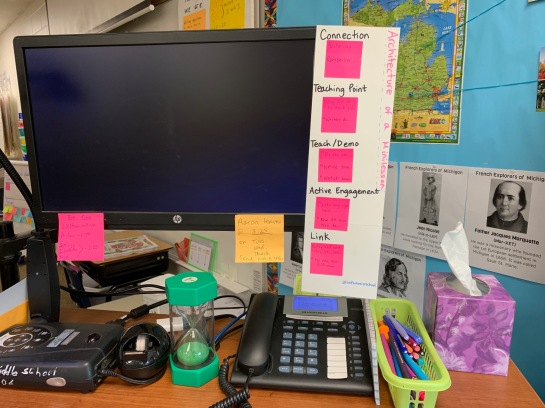
Making time, synthesizing our learning, and then making positive changes within our classrooms is all part of what reading a professional text is about! We read because we want to learn from teachers, authors, educators, and the fantastic minds that surround us in professional texts. As you make decisions about what to read next, I hope you will consider trying out a strategy to not only read a book that is new to you but also try out your learning and share with your colleagues. I also bet you have tried and true strategies that have helped you accomplish reading professional texts. Share your thoughts and ideas below AND tell us what you hope to read next! Let’s create a list of great professional texts in the comments for all of us who teach writing. Even better, your comment will enter you in the giveaway!
You can also continue the conversation on Monday night at 8:30 p.m. EDT when we continue to chat about our professional learning! Join us.
- This giveaway is for a copy of Welcome to Writing Workshop: Engaging Today’s Students with a Model That Works Thanks to Stenhouse Publishers for donating a copy for one reader. (You must have a U.S. mailing address to win a print copy of this book.)
- For a chance to win this copy of Welcome to Writing Workshop, please leave a comment about this or any blog post in this blog series by Sunday, May 5th at 6:00 p.m. EDT. Melanie Meehan will use a random number generator to pick the winner’s commenter number. His/her name will be announced in the ICYMI blog post for this series on Monday, May 6th.
- Please leave a valid e-mail address when you post your comment so Melanie can contact you to obtain your mailing address if you win. From there, our contact at Stenhouse will ship the book to you. (NOTE: Your e-mail address will not be published online if you leave it in the e-mail field only.)
- If you are the winner of the book, Betsy will email you with the subject line of TWO WRITING TEACHERS – WELCOME TO WRITING WORKSHOP within five days of receipt. A new winner will be chosen if a response isn’t received within five days of the giveaway announcement.
Source:

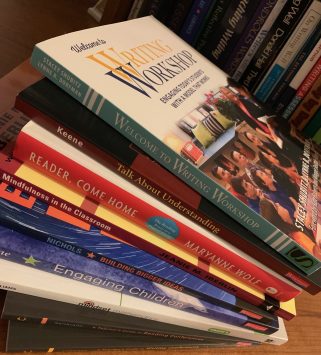
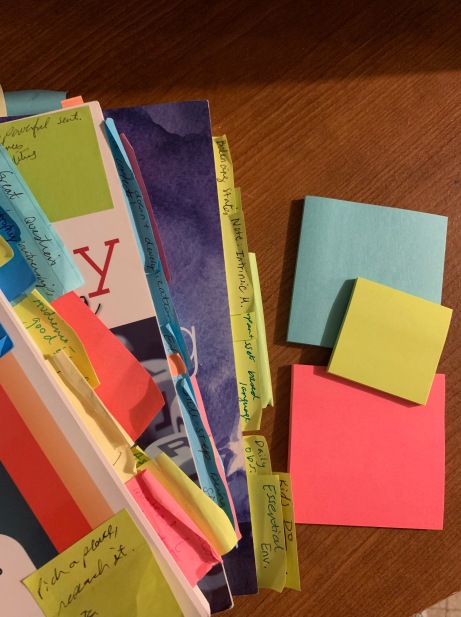
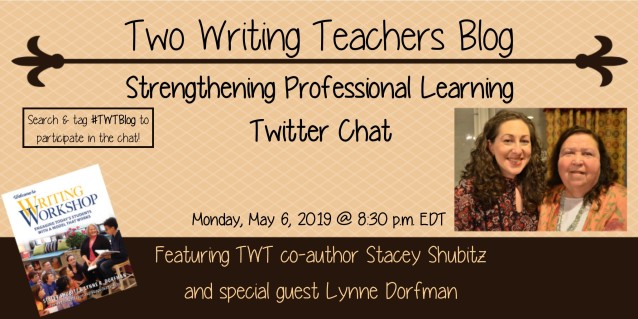
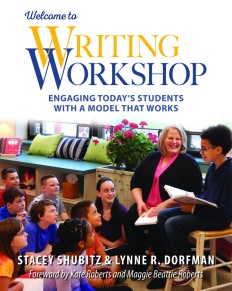

I’m often feeling overwhelmed by my pile and have to remind myself to just read one chapter at a time. You asked for recommendations. “The Unstoppable Writing Teacher” by Colleen Cruz is a favourite.
LikeLike
As an avid PD book reader, I can definitely take on some of these tips- including the timer! PD rereads are great in the summer too!
LikeLike
This is the perfect post to support the professional reading teachers will do over the summer.
I will share this with my teachers!
LikeLike
Very helpful in prioritizing my endless tbr pile!!
Thank you!!
LikeLike
Great information! ALways looking for ways to help me get through my TBR pile in an efficient manner! THanks for the chance to win!
LikeLike
So many important ideas here! Thank you.
LikeLike
Thank you for all your detailed suggestions. This is just so helpful and enlightening when there is so much to do and usually so little time! Will definitely try to put some into practice…
LikeLike
So many stacks, so little time! I love your ideas of setting a timer to read at least a little of the professional book every day. Also, reading books that don’t just confirm my own way of thinking, but continuing to stretch my thinking needs to be more of a priority. Thank you for this thoughtful post!
LikeLike
Thoroughly loved this! It will help me tremendously when tackling
my stack of books!!
LikeLike
I’m looking forward to trying out some of your tips the next time I settle in with a new professional book. 🙂
LikeLike
Thank you so much for this post. It makes me feel better to know I am not alone in my unread or only partly-read stack of professional books! Your suggestions are great and I am going to look into the idea of sketchnotes and teacher anchor charts.
LikeLike
My big takeaways from your article were slow books and fast books and reading ones that don’t just confirm my bias. I’m going to think about my stacks in this new way and see what that does to my learning. Thanks!
LikeLike
It seems like the stack never ends around my house. I am so giddy to get them all read though. I love the new thoughts that pour out from these books. Whenever I finish a book I do a short write up of it. I have so many teachers I work with that really want the content knowledge of what’s in a book but may not have time to read it. I like to give them my “CliffNotes” so they can take something from it or decide if the book is something they want to dive deeper into.
LikeLike
Always overwhelmed by my stack! I set a timer for other things in my life. Why did I never think to do this for my professional reading?!? Starting today…
LikeLike
As someone who commutes over an hour a day, I have often wished I could find a professional book in audio format. I wonder why the publishers haven’t moved into that realm yet?
LikeLike
Thank you for sharing your great and practical ideas for engaging with professional reading!
LikeLike
Thank you for your very helpful ideas! I do have a pile of professional texts I was trying to figure out how to read effectively. I will first find a non negotiable time of my day.
LikeLike
I often feel overwhelmed with professional reading and have what seems like a never-ending stack. Thanks for this post with ideas and strategies to make it more manageable. I am looking forward to making a dent in the stack and trying new ideas in the classroom!
LikeLiked by 1 person
Thank you for this great post. As teachers, we are often so consumed in thinking of the learning of those under our care that we forget to be strategic about nurturing our own learning. I truly believe that we must continually model the literate life that we would like for our students to live. Continually developing our own learning with professional reading is a huge component. Thank you for your practical and timely suggestions!
LikeLike
I have a sweet pile next to my bed as well!! Thanks for re-energizing me!
LikeLike
Dedicating time to read ANY thing is helpful, but especially for professional learning. Timelines and note-taking are helpful, too! It’s similar to goal-setting we have for our students. 🙂
LikeLike
Ahhh the stack, I have one too and I like many of the ideas shared to get the most out of my reading. thanks.
LikeLiked by 1 person
These ideas have been very helpful today bring my professional reading full circle. Thank you!
LikeLike
I always have a stack of professional reading that seems to overwhelm me. Thanks for this post which has given me much food for thought. I especially like the tip to share with colleagues. I do a lot of co-teaching and love when we both get excited about a book together and start applying and trying new ideas in the classroom. It makes it so much more fun!
LikeLiked by 1 person